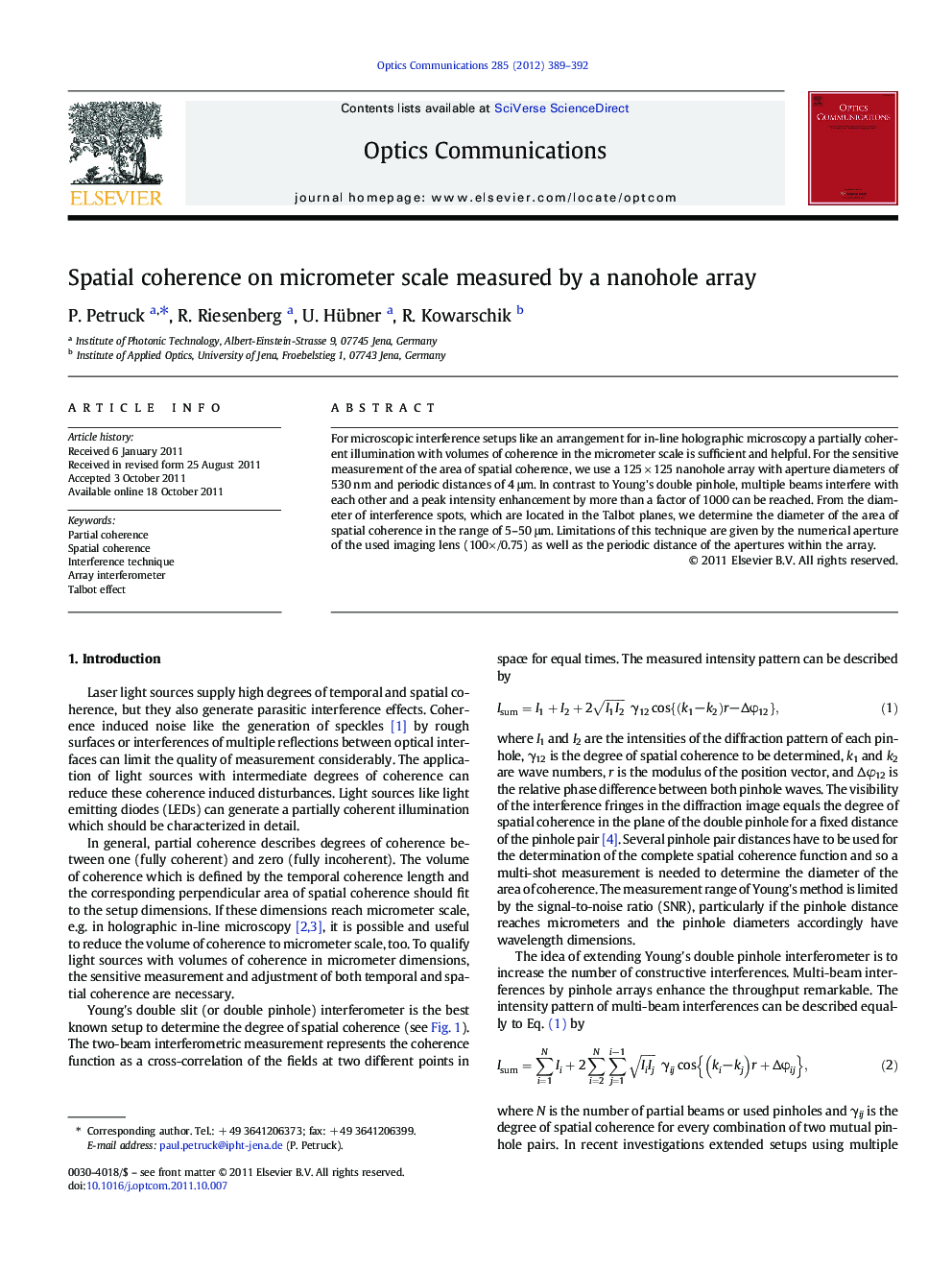| Article ID | Journal | Published Year | Pages | File Type |
|---|---|---|---|---|
| 1536662 | Optics Communications | 2012 | 4 Pages |
For microscopic interference setups like an arrangement for in-line holographic microscopy a partially coherent illumination with volumes of coherence in the micrometer scale is sufficient and helpful. For the sensitive measurement of the area of spatial coherence, we use a 125 × 125 nanohole array with aperture diameters of 530 nm and periodic distances of 4 μm. In contrast to Young's double pinhole, multiple beams interfere with each other and a peak intensity enhancement by more than a factor of 1000 can be reached. From the diameter of interference spots, which are located in the Talbot planes, we determine the diameter of the area of spatial coherence in the range of 5–50 μm. Limitations of this technique are given by the numerical aperture of the used imaging lens (100×/0.75) as well as the periodic distance of the apertures within the array.
